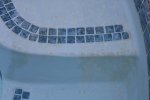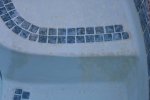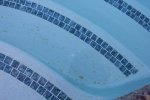Three years ago I had my in ground pool re-plastered buy a reputable pool company and when finished it looked great.
About a year and a half ago I noticed some discolorations on the steps. Upon scratching them with my finger nail I noticed that the plaster had disappeared and what I was seeing was the sand which the plaster contains. I had it looked at by the pool refinishing company and they told me it was the stabilizer I used. Without getting into that, we have not established that to be fact, especially since I used BioGuard tablet chlorine. Since then the pool has blossomed with this surface erosion on better than half of the pool and all over the spa. I’m looking for someone who might have experienced the same thing, and/or an expert in this field who might be able to give me advice as to how to move forward. I’m wondering if the plaster composition could have been defective, or the method of finishing the plaster might be in question. As I see it the only way to fix it is to re-plaster the pool (again).
About a year and a half ago I noticed some discolorations on the steps. Upon scratching them with my finger nail I noticed that the plaster had disappeared and what I was seeing was the sand which the plaster contains. I had it looked at by the pool refinishing company and they told me it was the stabilizer I used. Without getting into that, we have not established that to be fact, especially since I used BioGuard tablet chlorine. Since then the pool has blossomed with this surface erosion on better than half of the pool and all over the spa. I’m looking for someone who might have experienced the same thing, and/or an expert in this field who might be able to give me advice as to how to move forward. I’m wondering if the plaster composition could have been defective, or the method of finishing the plaster might be in question. As I see it the only way to fix it is to re-plaster the pool (again).




